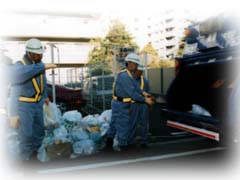 Eco
Kids has so far focused on the wide range of activities undertaken by Junior
Eco Clubs around the country, like cleaning up litter and recycling. This
month, we look at one environmental issue that's becoming a very serious problem
in Japan: coping with growing heaps of garbage. The way trash is collected
and disposed of differs from one local government to another. So we'll take
the example of Tokyo to highlight some of the problems associated with waste
disposal.
Eco
Kids has so far focused on the wide range of activities undertaken by Junior
Eco Clubs around the country, like cleaning up litter and recycling. This
month, we look at one environmental issue that's becoming a very serious problem
in Japan: coping with growing heaps of garbage. The way trash is collected
and disposed of differs from one local government to another. So we'll take
the example of Tokyo to highlight some of the problems associated with waste
disposal.
Tokyo is the capital of Japan and is the
most heavily populated of the country's 47 prefectures with 11.77 million
residents. Tokyo stretches east-west, and its political, economic, and industrial
activities are concentrated in the 23 wards near Tokyo Bay.
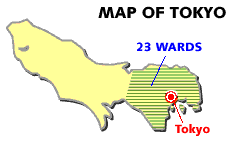
Collection
The way trash is collected outside the 23
wards is determined by each municipality. Within the central 23 wards, meanwhile,
trash that can be incinerated (kitchen waste, paper, wood) is collected three
times a week, while metals, glass, ceramics, plastics, rubber, and other nonflammable
garbage are collected once a week.
 Large
items, like bicycles and furniture, are collected separately twice a month
when individual households request to have them hauled away.
Large
items, like bicycles and furniture, are collected separately twice a month
when individual households request to have them hauled away.
In fiscal 1997, some 5.53 million
tons of waste were collected in Tokyo. The volume has been decreasing slightly
since 1990, thanks to stepped up recycling efforts. And additional efforts
are now being made to further reduce the volume of waste.
Recycling
Since
April 1997 clear plastic bottles made of polyethylene terephthalate (PET)
have been collected separately by the Tokyo metropolitan government at collection
boxes in supermarkets, liquor stores, and convenience stores. As of June 1998,
4,238 stores in the 23 wards were cooperating with this initiative.
Since June 1997, moreover,
a new policy aimed at boosting recycling has been implemented in certain sections
of central Tokyo. Instead of collecting waste for incineration three times
a week, the government collects burnable trash just twice, and once a week
it now collects three types of recyclable "resources": paper (newspapers,
magazines, and cardboard boxes), bottles, and cans. The Tokyo government says
it hopes to launch such initiatives over a wider area in the future.
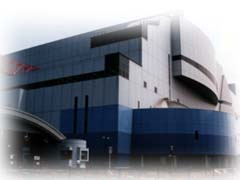 Nationwide,
some 15 million tons of paper were collected in fiscal 1996, a recycling rate
of 51.6%. The 1996 figure for steel cans was 1.1 million tons, a recycling
rate of 77.3%, and 190,000 tons for aluminum cans, a rate of 70.2%. Some 7.9
billion bottles were collected the same year, a recovery rate of 49%.
Nationwide,
some 15 million tons of paper were collected in fiscal 1996, a recycling rate
of 51.6%. The 1996 figure for steel cans was 1.1 million tons, a recycling
rate of 77.3%, and 190,000 tons for aluminum cans, a rate of 70.2%. Some 7.9
billion bottles were collected the same year, a recovery rate of 49%.
As for PET bottles,
some 179 tons were being collected every month in Tokyo as of October 1997,
an 18.1% recycling rate. The collected bottles are sorted, crushed into powder,
and cleaned before being turned into other materials, like clothing and stationery
goods.
The paper collected
in the 23 wards, meanwhile, is jointly processed by the ward and prefectural
governments and turned into toilet paper or facial tissues, which have been
on the market since October 1995.
Waste
Treatment
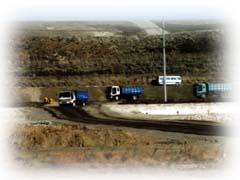 The
burnable trash collected from households and offices in the 23 wards are taken
to one of 18 plants in Tokyo for incineration. The ash that remains is then
taken to landfills in Tokyo Bay. The nonflammable trash is first taken to
treatment plants, where iron and aluminum are removed, and then taken to landfills.
The
burnable trash collected from households and offices in the 23 wards are taken
to one of 18 plants in Tokyo for incineration. The ash that remains is then
taken to landfills in Tokyo Bay. The nonflammable trash is first taken to
treatment plants, where iron and aluminum are removed, and then taken to landfills.
The large items
that are collected separately from households are first crushed and then have
their iron contents removed. The parts that can be burned are incinerated,
while the remaining nonflammable items are sent to landfills.
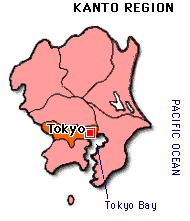


 Eco
Kids has so far focused on the wide range of activities undertaken by Junior
Eco Clubs around the country, like cleaning up litter and recycling. This
month, we look at one environmental issue that's becoming a very serious problem
in Japan: coping with growing heaps of garbage. The way trash is collected
and disposed of differs from one local government to another. So we'll take
the example of Tokyo to highlight some of the problems associated with waste
disposal.
Eco
Kids has so far focused on the wide range of activities undertaken by Junior
Eco Clubs around the country, like cleaning up litter and recycling. This
month, we look at one environmental issue that's becoming a very serious problem
in Japan: coping with growing heaps of garbage. The way trash is collected
and disposed of differs from one local government to another. So we'll take
the example of Tokyo to highlight some of the problems associated with waste
disposal. 
 Large
items, like bicycles and furniture, are collected separately twice a month
when individual households request to have them hauled away.
Large
items, like bicycles and furniture, are collected separately twice a month
when individual households request to have them hauled away. Nationwide,
some 15 million tons of paper were collected in fiscal 1996, a recycling rate
of 51.6%. The 1996 figure for steel cans was 1.1 million tons, a recycling
rate of 77.3%, and 190,000 tons for aluminum cans, a rate of 70.2%. Some 7.9
billion bottles were collected the same year, a recovery rate of 49%.
Nationwide,
some 15 million tons of paper were collected in fiscal 1996, a recycling rate
of 51.6%. The 1996 figure for steel cans was 1.1 million tons, a recycling
rate of 77.3%, and 190,000 tons for aluminum cans, a rate of 70.2%. Some 7.9
billion bottles were collected the same year, a recovery rate of 49%. The
burnable trash collected from households and offices in the 23 wards are taken
to one of 18 plants in Tokyo for incineration. The ash that remains is then
taken to landfills in Tokyo Bay. The nonflammable trash is first taken to
treatment plants, where iron and aluminum are removed, and then taken to landfills.
The
burnable trash collected from households and offices in the 23 wards are taken
to one of 18 plants in Tokyo for incineration. The ash that remains is then
taken to landfills in Tokyo Bay. The nonflammable trash is first taken to
treatment plants, where iron and aluminum are removed, and then taken to landfills.